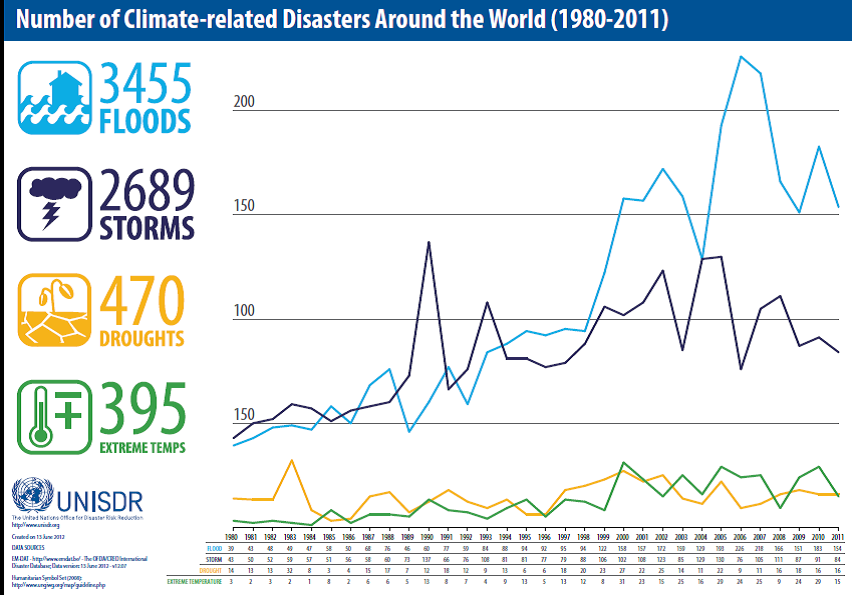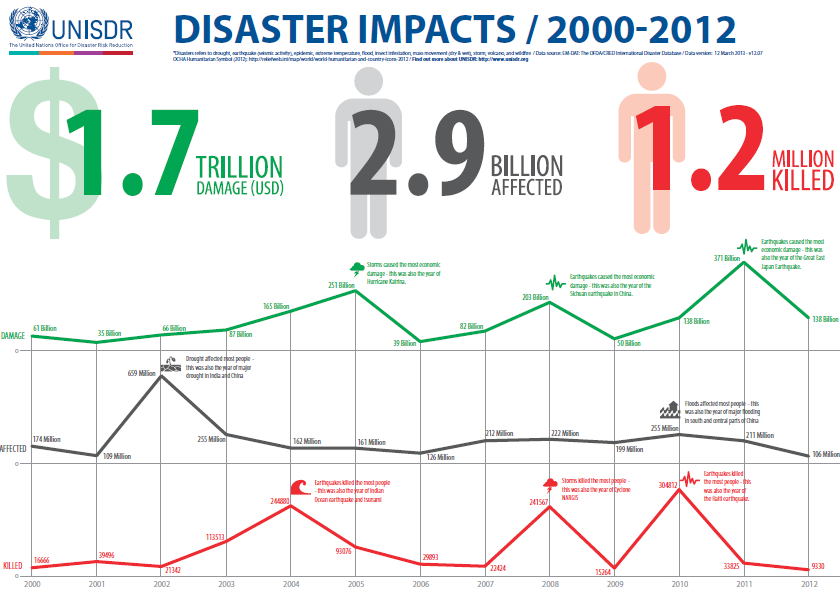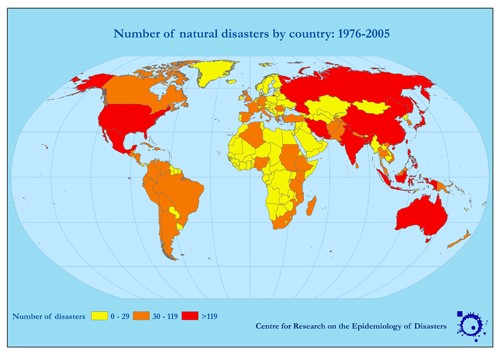Difference between revisions of "Resilience in the Transport Sector"
***** (***** | *****) |
***** (***** | *****) |
||
| Line 48: | Line 48: | ||
= Concluding remarks / Summary<br/> = | = Concluding remarks / Summary<br/> = | ||
| − | As illustrated through the work undertaken under various streams mentioned above, it is clear that at present our transportation systems are fragile. On the other hand, the transport sector plays a vital role in achieving economic growth of a country. Thus to ensure unhindered economic progress, it is increasingly becoming urgent to safeguard the transportation systems against the after math of natural disasters whose frequency of occurring is increasing at an alarming rate. To design such a resilient transportation system will require a robust regulatory reforms from the governments. Hence transportation sector should be considered as a key <del datetime="2014-05-26T10:02" cite="mailto:Dominik%20Schmid"> | + | As illustrated through the work undertaken under various streams mentioned above, it is clear that at present our transportation systems are fragile. On the other hand, the transport sector plays a vital role in achieving economic growth of a country. Thus to ensure unhindered economic progress, it is increasingly becoming urgent to safeguard the transportation systems against the after math of natural disasters whose frequency of occurring is increasing at an alarming rate. To design such a resilient transportation system will require a robust regulatory reforms from the governments. Hence transportation sector should be considered as a key <del datetime="2014-05-26T10:02" cite="mailto:Dominik%20Schmid"></del>enabler towards making communities more resilient towards the climate change. |
<br/> | <br/> | ||
= Further information<br/> = | = Further information<br/> = | ||
Revision as of 09:43, 3 June 2014
Overview/Impact and importance of Resilience in transport sector
Globally the number of natural disasters, i.e. climate related disasters such as flooding, drought, storms/cyclone and extreme temperature changes are increasing worldwide, particularly in the last few years.
Within the period from 2000-2012, climate related disasters* had a serious impact on the world. In total they have caused [2]
- US$ 1.7 trillion of damage
- 2.9 billion people have been directly affected
- 1.2 million people have been killed
- Within this section we will be considering a wide range of natural disasters but will be primarily focusing on natural disasters associated with climate change.
It has been forecasted that if the trend continuous damages could reach up to 20% of the entire global GDP at the end of the century.[4]
Over the period of the last 10 years, of the 10 deadliest disasters that have occurred worldwide, 7 have occurred within counties of Asia. In the graph below, the countries in red experienced more than 119 natural disasters. A closer look reveals that most of these countries lie in the Asian region.[5]
Urbanization exacerbates the damages that natural disasters causes, thus necessitating the need for communities to become resilient[6].
Resilience is defined as the ability of an individual, household, community, a country or a region to withstand, adapt and quickly recover from stresses and shocks caused by natural disasters.[7]
An important strategy to increase overall resilience is to improve the resilience of the transport system. Under normal conditions, it provides capable mobility options for moving passengers as well as goods. However under emergency or evacuation situations the significance of a system’s utility and value as a support role become more apparent. The same holds true for the system’s ability to support post-disaster recovery and supply efforts[8].Transport systems allow movements away from adverse conditions (i.e. removing things or people away from the destruction or damage being caused) or towards areas of greater need (i.e. provide resources to help with recovery work). In addition, the longer a transport system remains disrupted during and after a shock, the more severe economic losses will be for community/region. Climate changes taking place, in form of more natural disasters occurring, have the ability of severely disrupting transport services and/or damaging the infrastructure thus limiting mobility or putting it to a standstill in time of dire need[9].
Thus an efficient transportation system can play an important role towards making the community resilient[10]. The limited funds that are available for supporting transport infrastructure need to be used in an efficient and just manner in order to make the communities’ mobility resilient. This can be done by designing, developing and maintaining transport infrastructure that is able to meet the existing and future climate change conditions.
The following links below provide information on resources and projects on resilience in the transport sector, with a focus on adaptation towards climate change. Please also have a look at the article Adapting Urban Transport to Climate Change which provides more in-depth information.
Projects and Resources in field of Resilience and Transport
Publications and Resources
Under this thematic area, all work that has been published or reported in field of Transport Resilience is mentioned.
Research Projects
Under this thematic area, all research work that has been undertaken in field of Transport Resilience is mentioned.
Implementation Projects
Under this thematic area, implementation work that has been undertaken in field of Transport Resilience is mentioned.
Concluding remarks / Summary
As illustrated through the work undertaken under various streams mentioned above, it is clear that at present our transportation systems are fragile. On the other hand, the transport sector plays a vital role in achieving economic growth of a country. Thus to ensure unhindered economic progress, it is increasingly becoming urgent to safeguard the transportation systems against the after math of natural disasters whose frequency of occurring is increasing at an alarming rate. To design such a resilient transportation system will require a robust regulatory reforms from the governments. Hence transportation sector should be considered as a key enabler towards making communities more resilient towards the climate change.
Further information
- ↑ http://infographics.idlelist.com/number-of-climate-related-disasters-around-the-world-1980-2011/
- ↑ Source: UNISDR
- ↑ http://www.indexmundi.com/blog/index.php/2013/06/03/economic-and-human-impact-of-natural-disasters/
- ↑ http://www.google.co.in/url?sa=t&rct=j&q=&esrc=s&source=web&cd=4&cad=rja&uact=8&ved=0CEEQFjAD&url=http%3A%2F%2Fmudancasclimaticas.cptec.inpe.br%2F~rmclima%2Fpdfs%2Fdestaques%2Fsternreview_report_complete.pdf&ei=2gZ7U5OJAsO9uATvk4KICw&usg=AFQjCNFFmJMSu0en0pplIr5kIHqbzrRKsA&sig2=LCadmR9f5OtEtEOmF4XbWg&bvm=bv.67229260,d.c2E
- ↑ Source: EM-DAT: The OFDA/CRED International Disaster Database – www.emdat.be, Université Catholique de Louvain, Brussels (Belgium)
- ↑ Source : http://esa.un.org/unup/Maps/maps_2011_2025.htm
- ↑ Source: European Commission
- ↑ Source: Amdal. James, Swigart. Stan , 2010; Resilient Transportation Systems in a Post Disaster Environment: A Case Study of opportunities realized and missed in the Greater New Orleans region
- ↑ Adapted text from http://www.transport.vic.gov.au/research/sustainability/transport-resilience-and-climatic-extremes
- ↑ Adapted text from Evaluating Transportation Resilience: Evaluating The Transportation System’s Ability To Accommodate Diverse, Variable and Unexpected Demands With Minimal Risk(http://www.vtpi.org/tdm/tdm88.htm)























